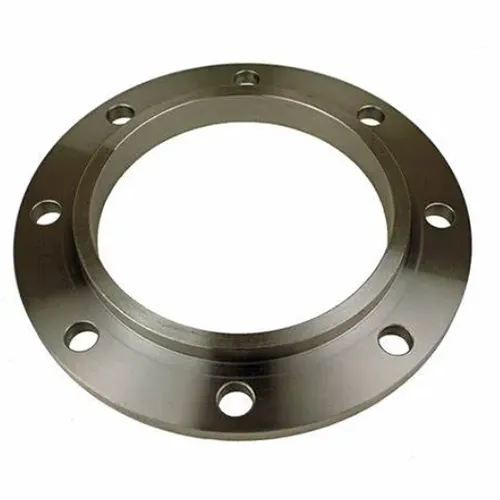-
Cangzhou Yulong Steel Co., Ltd.
-
Phone:
+86 13303177267 -
Email:
admin@ylsteelfittings.com
- English
- Arabic
- Italian
- Spanish
- Portuguese
- German
- kazakh
- Persian
- Greek
- French
- Russian
- Polish
- Thai
- Indonesian
- Vietnamese
- Zulu
- Korean
- Uzbek
- Hindi
- Serbian
- Malay
- Ukrainian
- Gujarati
- Haitian Creole
- hausa
- hawaiian
- Hebrew
- Miao
- Hungarian
- Icelandic
- igbo
- irish
- Japanese
- Javanese
- Kannada
- Khmer
- Rwandese
- Afrikaans
- Albanian
- Amharic
- Armenian
- Azerbaijani
- Basque
- Belarusian
- Bengali
- Bosnian
- Bulgarian
- Catalan
- Cebuano
- China
- China (Taiwan)
- Corsican
- Croatian
- Czech
- Danish
- Esperanto
- Estonian
- Finnish
- Frisian
- Galician
- Georgian
- Kurdish
- Kyrgyz
- Lao
- Latin
- Latvian
- Lithuanian
- Luxembourgish
- Macedonian
- Malgashi
- Malayalam
- Maltese
- Maori
- Marathi
- Mongolian
- Myanmar
- Nepali
- Norwegian
- Norwegian
- Occitan
- Pashto
- Dutch
- Punjabi
- Romanian
- Samoan
- Scottish Gaelic
- Sesotho
- Shona
- Sindhi
- Sinhala
- Slovak
- Slovenian
- Somali
- Sundanese
- Swahili
- Swedish
- Tagalog
- Tajik
- Tamil
- Tatar
- Telugu
- Turkish
- Turkmen
- Urdu
- Uighur
- Welsh
- Bantu
- Yiddish
- Yoruba

Oct . 22, 2024 09:20 Back to list
ANSI 150 Flanges Specifications and Applications in Industrial Settings
Understanding Flanges A Focus on ANSI 150 Flanges
Flanges are critical components in various piping systems, providing a reliable way to connect pipes, valves, pumps, and other equipment. Among the various standards available for flanges, the ANSI 150 flange is particularly notable. This standard pertains to the American National Standards Institute (ANSI) specifications, which are widely recognized and utilized in industrial applications across the globe.
What is an ANSI 150 Flange?
The ANSI 150 flange refers to a specific class of flanges designed to withstand a particular pressure rating, with 150 indicating the maximum pressure of 150 pounds per square inch (psi) at a standard temperature. This rating is essential for understanding the limits within which the flange can operate safely. ANSI 150 flat-faced flanges typically work in general service applications where the pressures and temperatures do not exceed the specified limits.
These flanges come in various materials, including carbon steel, stainless steel, and specialized alloys, allowing for broad application across sectors, including oil and gas, water treatment, and chemical processing. The choice of material depends on factors such as the medium being transported, environmental conditions, and compatibility with other materials.
Design Specifications
ANSI 150 flanges can be classified into several types, including weld neck, slip-on, blind, and threaded flanges, each designed for specific applications.
- Weld Neck Flanges These flanges feature a tapered neck, allowing for a strong connection to the pipe. They are ideal for high-pressure applications and provide excellent structural integrity. - Slip-On Flanges These flanges are designed to slip over the end of a pipe and are welded in place. They are easier to install and are suitable for low-pressure applications. - Blind Flanges As the name suggests, these flanges do not have a hole and are used to seal the end of a piping system. They can withstand high pressure and are often used in high-pressure applications where future dismantling is not anticipated. - Threaded Flanges These flanges have internal threads, allowing them to be screwed onto a pipe. They are typically used in low-pressure applications and facilitate easier installation and removal, as they do not require welding.
flange 4 ansi 150

Advantages of ANSI 150 Flanges
One significant advantage of using ANSI 150 flanges is their standardization, which ensures compatibility across various manufacturers and industries. This interchangeability not only streamlines the design and procurement process but also simplifies maintenance and repair tasks.
Moreover, ANSI 150 flanges, when properly installed and maintained, offer excellent sealing capabilities, reducing the risk of leaks within the piping system. They are designed to withstand considerable fluctuations in temperature and pressure, making them suitable for a wide range of applications.
Installation and Maintenance Considerations
While ANSI 150 flanges are robust and reliable, proper installation and maintenance are crucial for ensuring their longevity and performance. It is essential to follow manufacturer guidelines and industry best practices when installing these flanges. Techniques such as proper torque specifications, the use of gaskets, and regular inspections for wear and tear can prevent leaks and failures.
Conclusion
In conclusion, ANSI 150 flanges are a vital component in modern piping systems, offering versatility, reliability, and efficiency in various applications. Understanding their design, classifications, and best practices for installation can significantly impact the performance and durability of a piping system. Whether in the oil and gas sector, chemical processing, or water treatment facilities, ANSI 150 flanges continue to be a preferred choice for engineers and technicians alike.
Latest news
-
ANSI 150P SS304 SO FLANGE
NewsFeb.14,2025
-
ASTM A333GR6 STEEL PIPE
NewsJan.20,2025
-
ANSI B16.5 WELDING NECK FLANGE
NewsJan.15,2026
-
ANSI B16.5 SLIP-ON FLANGE
NewsApr.19,2024
-
SABS 1123 FLANGE
NewsJan.15,2025
-
DIN86044 PLATE FLANGE
NewsApr.19,2024
-
DIN2527 BLIND FLANGE
NewsApr.12,2024
-
JIS B2311 Butt-Welding Fittings LR/SR 45°/90° /180°Seamless/Weld
NewsApr.23,2024











